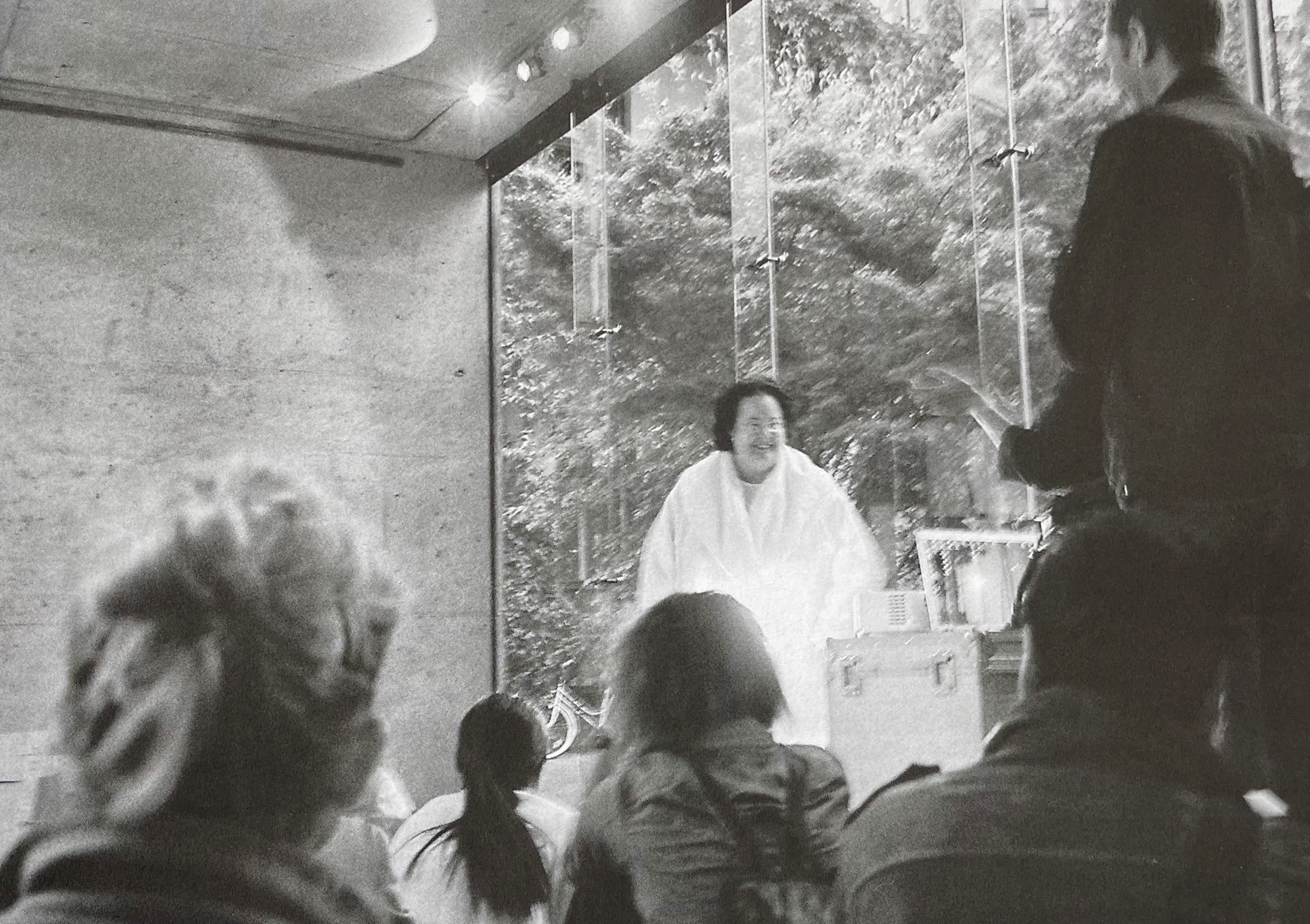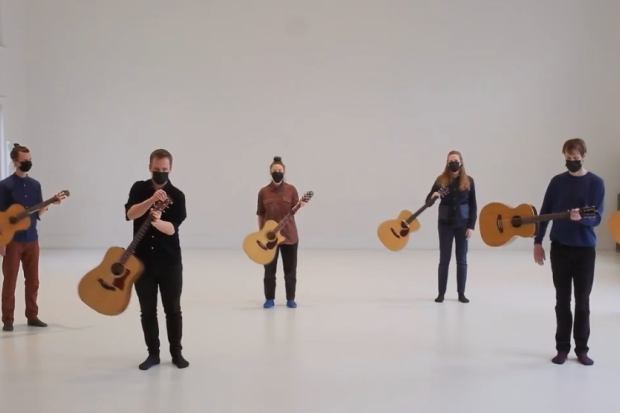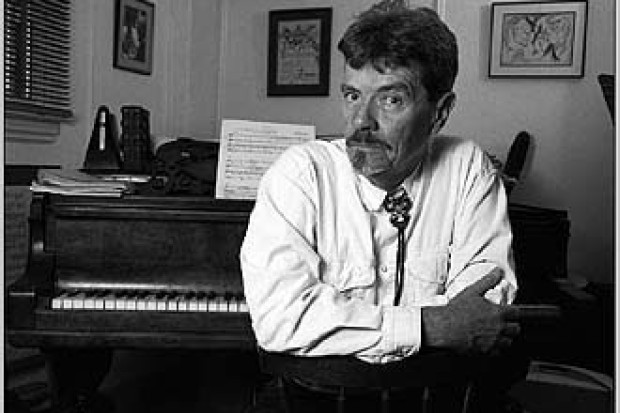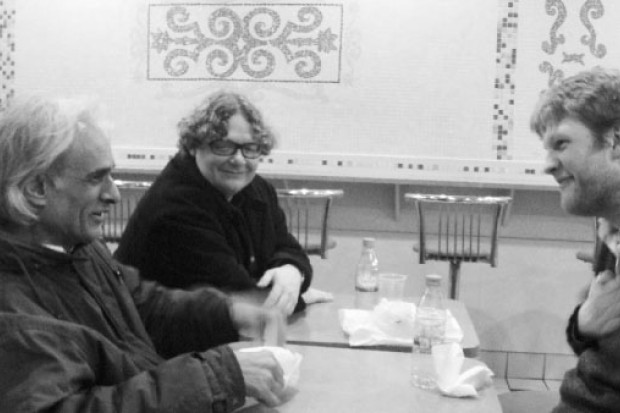
Maria de Alvear in the A trans Pavilion, Berlin (Photo: Garrett Sholdice)
Maria de Alvear
A young boy wandered behind the thicket of trees in the courtyard outside the venue, stopped at the glass-front wall of the A trans Pavilion and peered inside. He would have seen around twenty people seated on a thirty-six-square-metre concrete floor carpeted by a multitude of A3-size prints of a deep blue seascape, a bright yellow wooden sea-saw providing a curious centre-piece and, at one end of the space, Maria de Alvear, clad in an almost fluorescent white trench coat and matching white sneakers, vocalising and gesticulating with an undulating energy, behind her a video projection showing moving German text on a backdrop of luminous colour. The boy’s eyes visibly widened as he took this in. He paused, watched and listened for a minute or two before rejoining his parents and ambling toward the gently murmuring café ambience of the neighbouring courtyard.
The boy was observing the sixth instalment of Zwielicht, a concert series curated by two Berlin-based Canadians: the composer Marc Sabat and visual artist Mareike Lee (whose Slapback exhibition provided the décor). The elegant concept behind the series is as follows: Concerts always take place in the A trans Pavilion, a tiny concrete and glass art gallery nestled in the back of the Hackesche Höfe, a network of courtyards in (former) East Berlin; and concerts always take place at twilight (zwielicht is German for twilight). The start times, therefore, are all very different and quirkily-precise, depending on the season, but the venue is always lit by the same hue of natural light. The duration of any concert in the series never exceeds an hour.
With Songs of an Old Female Hippopotamus, composer-vocalist Maria de Alvear created an event as thoroughly engrossing in its singularity as a film by David Lynch or Le Corbusier’s Unite d’Habitation architecture, devised according to the proportions of the human body. After a pre-amble in German (incomprehensible to me, but delivered with a warmth transcendent of language), de Alvear bid us sit on the floor. A series of miniature solo voice pieces followed, none much longer than a few minutes and each introduced by a title in English, mostly charmingly ambiguous in nature (First Landscape, Second Landscape, Three Landscapes Later) and some gently humorous (Observing Sex, Observing a Submarine). The sense of a honed practice was overwhelming. A large palette of materials, seemingly crafted from a careful inspection of the qualities of bird and animal sounds, was marshalled in ways that struck me as intimately related to techniques found in jazz scat singing and North Indian classical singing. De Alvear’s sympathetic hand movements served to reinforce this feeling of observing a performance of several short evening ragas.
There was that sense, as during an Anglican Evensong performed by a good choir in a beautiful cathedral, of a coming together of sound, space and light. There was also the wonderful feeling of having happened upon something, just like that young boy.
Published on 1 October 2009
Garrett Sholdice is a composer and a director of the record label and music production company Ergodos.












